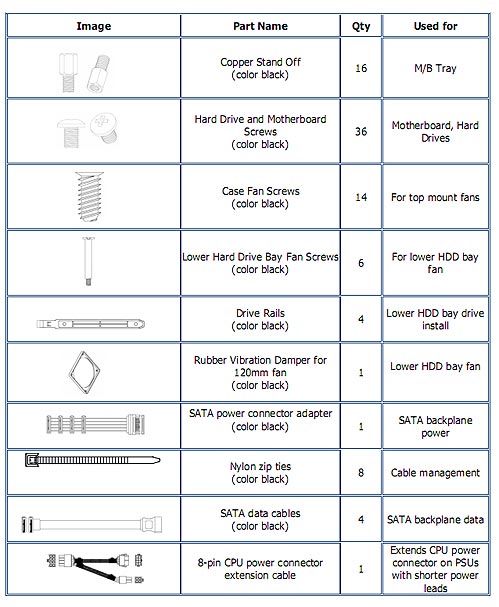Index
Obsidian 800D comes in a large cardboard box featuring a large picture of the case. The case belongs to the Obsidian series, which currently only holds this model, but we hope that Corsair will remedy that and introduce the 800D siblings soon enough. Of course, such a move would not only introduce variety in models, but features and prices as well.
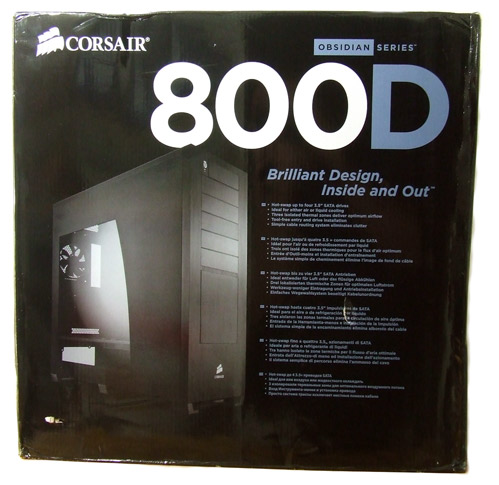
The back of the box features specs and since Corsair Obsidian 800D features a few uncommon traits, a short introduction surely won’t hurt.
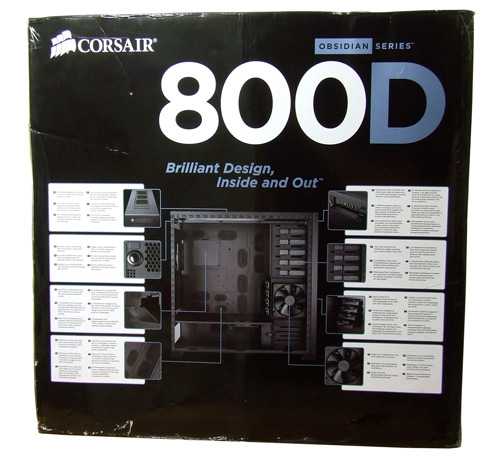
The cardboard box has obviously been through some minor tumbling during transport, but Corsair’s Styrofoam protection has prevented any damage to the case inside.
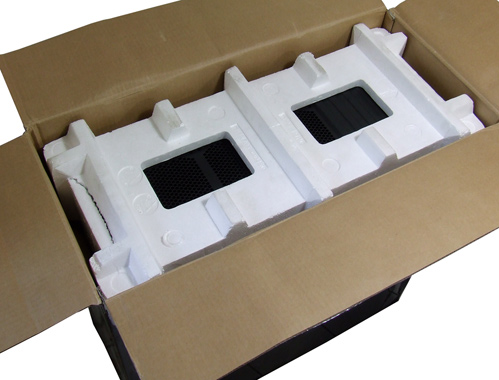
Although the cardboard box hasn’t gone through what we’d call serious damage, upon unpacking the case we’ve noticed that the front panel door wasn’t where it’s supposed to be. We found it on the bottom of the box, so the probable scenario is that it dropped during packaging or after the box collided with something. We put it back to its place and it worked flawlessly.
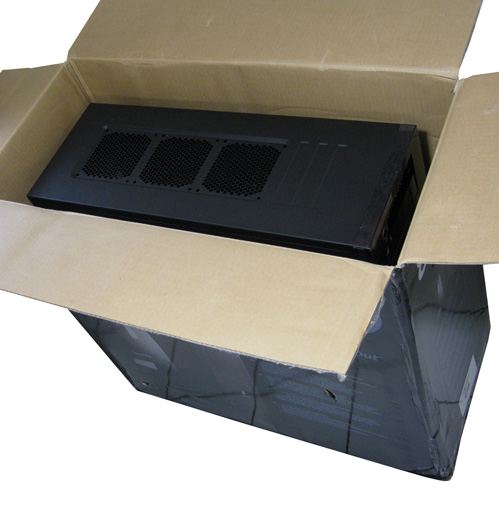
In order to prevent scratches in transport, Corsair used protective plastic cover as you can see from the picture below. Apart from the front panel, the side panel window has been covered as well and to top it all off, Corsair put the case in additional plastic wrapping. The sticky cover holds really well, perhaps too well even as we had to remove the front panel in order to remove all the bits and pieces of protective plastic cover. Although this might seem to be a drag, it’s a great way to show the care Corsair has taken to deliver a mint-condition Obsidian 800D to your doorstep.

You’ll get various screws with the case (colored in black), zip ties for cable management, two HD brackets (in case you need more than four disks mounted via the swappable drive bays on the front panel), anti-vibration rubber for one 120mm fan, four SATA cables, a short manual and a nice SATA extension cable with four connectors, intended to power the “residents” of the aforementioned hard drive bays. You’ll also get an extension cord for powering the CPU, and you’ll need it if your PSU’s 4/8 pin CPU isn’t long enough. This cord measures 23cm to the 8 pin connector and about 43cm to the 4 pin connector.
